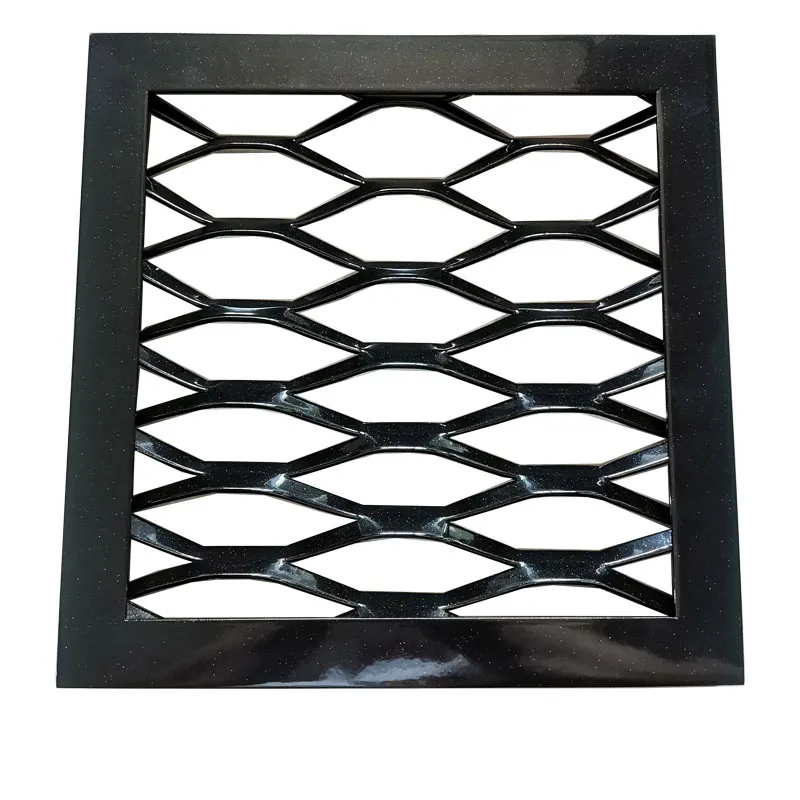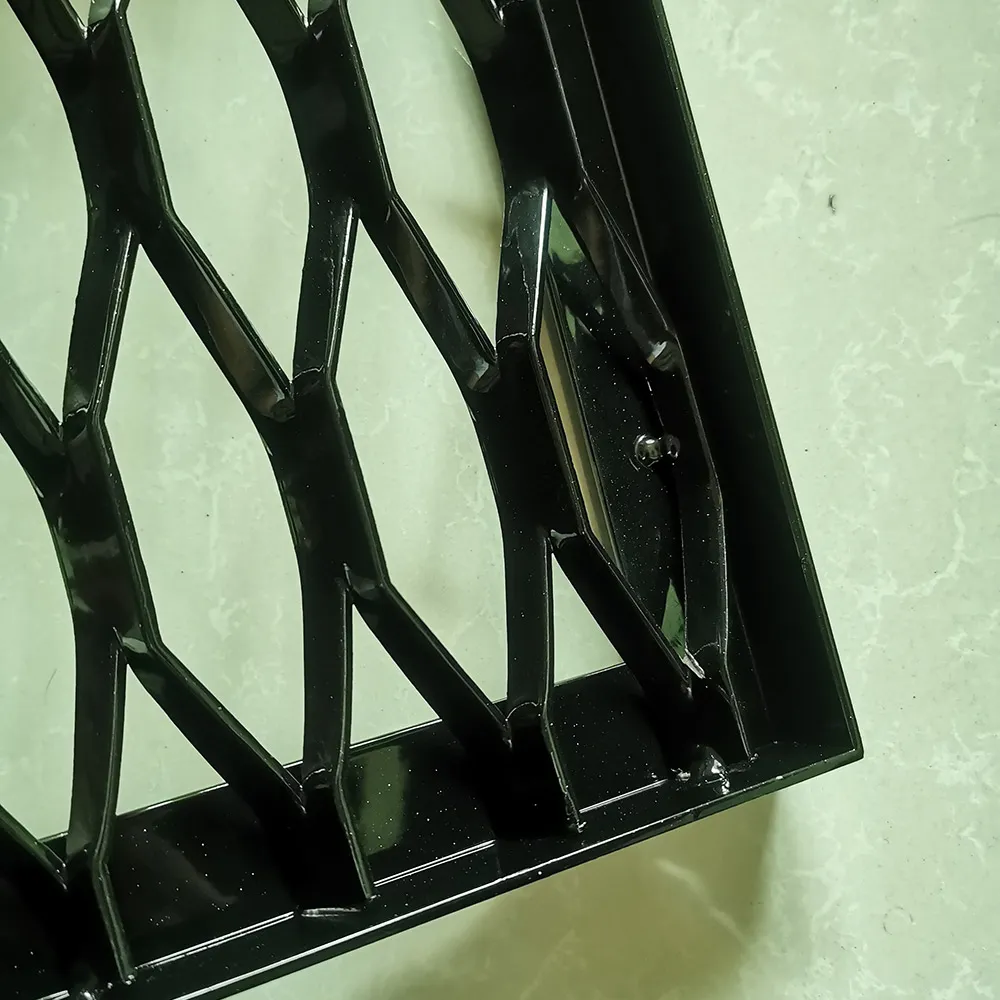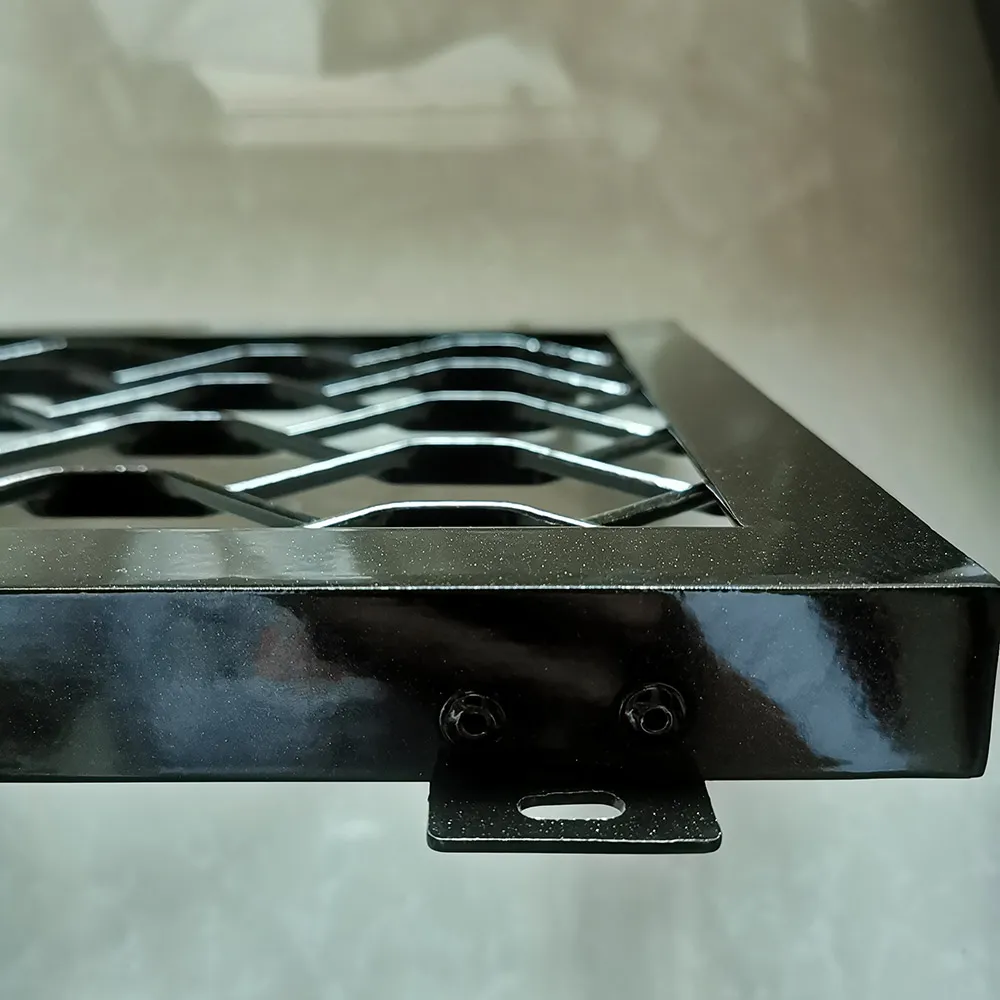The application of decorative expanded metal has transcended its traditional industrial roles, emerging as a pivotal material in contemporary architecture, interior design, and product aesthetics. This transformation is driven by its unique combination of aesthetic versatility, structural integrity, and functional benefits. Architects and designers are increasingly leveraging the material's inherent patterns, ability to diffuse light and air, and robust nature to create innovative and visually striking elements. From sophisticated building facades to intricate balustrades and artistic installations, the demand for high-quality decorative expanded metal panels continues to rise, reflecting a global trend towards materials that offer both performance and profound design potential. Its adaptability to various finishing techniques and custom patterns further enhances its appeal, allowing for unprecedented creative freedom in design projects.
Industry trends indicate a significant growth trajectory for specialized architectural metals, with expanded metal decorative solutions leading the charge. Market analysis forecasts a compounded annual growth rate (CAGR) of approximately 6.5% for architectural metal products from 2023 to 2030, driven by urbanization and the demand for sustainable and aesthetically pleasing building materials. This growth is also fueled by advancements in manufacturing technologies, enabling the production of more precise, intricate, and diverse patterns of decorative expanded metal mesh, meeting the stringent requirements of modern construction and design. As sustainability becomes a core design principle, the material's recyclability and potential for enhancing energy efficiency through optimized ventilation and shading contribute significantly to its expanding market presence.
The creation of high-quality decorative expanded metal involves a sophisticated manufacturing process that begins with a solid sheet of metal, typically steel, aluminum, stainless steel, or even copper and brass for specific aesthetic applications. Unlike woven or welded mesh, expanded metal is produced through a unique slitting and stretching technique. This process involves simultaneously slitting the sheet and then stretching it in a specific pattern, creating diamond-shaped, hexagonal, or other intricate openings without any material loss. This inherent characteristic makes expanded metal an economical and sustainable choice.
Key stages of the manufacturing process include:
Quality control is paramount throughout the process. Products are typically inspected against international standards such as ISO 9001 for quality management systems and ANSI/NAAMM standards for metal products, ensuring dimensional accuracy, material integrity, and finish quality. This rigorous adherence to standards ensures that each decorative expanded metal panel delivers consistent performance and meets the high expectations for visual and structural integrity in demanding architectural and design projects.

The technical specifications of decorative expanded metal are critical for engineers and designers to ensure optimal performance and aesthetic integration. Key parameters include the Long Way of Opening (LWO), Short Way of Opening (SWO), strand width, strand thickness, and open area percentage. These factors directly influence the material's strength-to-weight ratio, light transmission, airflow, and visual opacity. For instance, a higher open area percentage allows for greater light penetration and ventilation, ideal for sunscreens or facades where passive cooling is desired. Conversely, a lower open area creates a more solid appearance, suitable for privacy screens or cladding.
The technical advantages of expanded metal decorative solutions extend beyond mere aesthetics. Its monolithic structure, created without welds or interlocks, provides exceptional strength and rigidity, making it suitable for security applications while maintaining visual appeal. Furthermore, its open structure inherently allows for excellent air circulation and light diffusion, contributing to energy efficiency in buildings by reducing reliance on artificial lighting and HVAC systems. The ability to control light ingress and solar heat gain makes it an ideal material for sunshades and facade elements, directly impacting a building's thermal performance. In corrosive environments, selecting the appropriate material and finish, such as marine-grade aluminum or powder-coated stainless steel, ensures long-term durability and minimal maintenance.
The versatility of decorative expanded metal mesh makes it a preferred choice across numerous sectors, far beyond its traditional industrial roles. In architecture, it is extensively used for building facades, offering a contemporary aesthetic while providing solar shading, ventilation, and a degree of privacy. For instance, a notable application involves using customized decorative expanded metal panels for a university building's exterior, significantly reducing solar heat gain by 15% and contributing to LEED certification, as confirmed by post-occupancy evaluations.
In interior design, it serves as unique ceiling tiles, room dividers, stair railings, and furniture components, creating dynamic light and shadow play. An example includes a corporate lobby where an expanded metal decorative partition, featuring a bespoke pattern and bronze finish, elegantly delineates space while maintaining an open, airy feel, receiving positive client feedback for its innovative design and visual lightness.

Beyond traditional building applications, decorative expanded metal finds its way into retail displays, exhibition stands, and urban furniture, demonstrating its adaptability. Its robust yet visually appealing nature also makes it suitable for security screens, balustrades, and pedestrian bridges where both safety and design are paramount. The material's capacity for complex geometries and custom finishes allows it to meet the exacting demands of high-end projects, ensuring that each installation is not only functional but also a distinct piece of art. The range of patterns, from micro-mesh for intricate details to large, bold openings for dramatic effect, means that design possibilities are virtually limitless, affirming its status as a highly sought-after material in the creative industries.
Achieving specific design visions often requires extensive customization, a strength of decorative expanded metal. Leading manufacturers offer comprehensive customization services, ranging from unique mesh patterns and opening sizes to bespoke panel dimensions and intricate cut-outs. Clients can specify material type, gauge, and finish to precisely match project requirements for aesthetics, durability, and performance. For instance, a project requiring enhanced light diffusion might opt for a flattened expanded metal with a specific LWO/SWO ratio and a matte powder coating, while an artistic installation might demand a custom hexagonal pattern in polished stainless steel.
When selecting a manufacturer for expanded metal decorative solutions, several factors are critical to ensure quality and project success. Look for suppliers with a proven track record, extensive experience (e.g., 10+ years in the industry), and a portfolio demonstrating successful complex projects. Certifications like ISO 9001 are indicators of a robust quality management system. Furthermore, evaluate a manufacturer's technical support capabilities, including CAD/CAM design assistance, material specification guidance, and the ability to conduct performance testing (e.g., wind load analysis for facades). Reputable manufacturers often invest in advanced machinery, like automated expanding lines and robotic welding for secondary framing, ensuring precision and efficiency in production. Partnership with structural engineers and architects to understand specific project loads and environmental conditions is also a hallmark of a reliable supplier, fostering trust and delivering solutions that meet both aesthetic and engineering requirements.

Building trust in the B2B sector for specialized materials like decorative expanded metal hinges on transparency, reliability, and robust support. We understand the complexities of architectural and industrial projects, and our commitment extends beyond product delivery to comprehensive client assurance.
A: Absolutely. When specified with appropriate materials (e.g., stainless steel, aluminum) and corrosion-resistant finishes like powder coating or anodizing, decorative expanded metal is highly durable for outdoor facades, sunshades, and railings, with service lives often exceeding 20 years.
A: Standard product delivery typically ranges from 2-4 weeks. For complex custom orders involving unique patterns, specialized materials, or extensive finishing, lead times can range from 6-12 weeks, depending on project scope and volume. We provide detailed production schedules upon order confirmation.
A: While we primarily supply the expanded metal products, we offer comprehensive technical documentation, including CAD drawings and installation guidelines. For complex projects, our technical support team is available for consultation and can recommend experienced installers or fabrication partners.
A: Our products come with a standard 5-year material and manufacturing defect warranty. Specific finishes, like advanced powder coatings, may carry extended warranties of up to 10-15 years, ensuring long-term performance and peace of mind for our clients.
Our streamlined order-to-delivery process prioritizes efficiency and client communication. From initial inquiry and quotation (within 24-48 hours for standard requests) to production scheduling and logistics, clients are kept informed at every stage. We utilize robust packaging methods, often ISPM 15 certified wooden crates or steel pallets, to ensure safe and damage-free transit globally. Our dedicated customer support team is available to address any queries or provide technical assistance before, during, and after project completion. This holistic approach underpins our commitment to being a trusted partner in delivering premium decorative expanded metal panels for your most ambitious projects.
PREV:
This is the last article